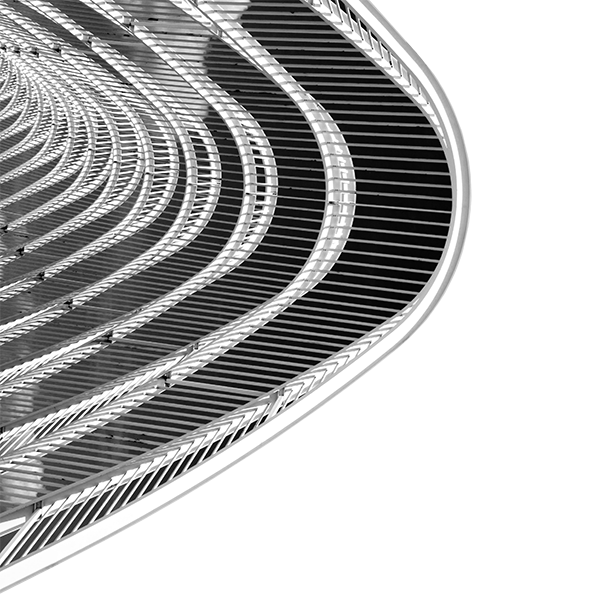EMA3D Training
EMA® is pleased to provide free training in EMA3D® and MHARNESS®. Please look at the demos below. In each case, EMA® provides:
- A document that lists every individual step and discussion of each procedure
- Downloadable CAD geometry files so that you can repeat the exercise or extend to your specific application
- A video in which an EMA analyst describes every step in the process
Here are the topics thus far:
Introduction to EMA3D®

In aircraft development, significant resources are spent to ensure safety during a lightning strike. Experiments are very costly and it’s impossible to measure every interesting quantity at every location. With lightning simulations, a more complete data set can be taken (all field values can be known in any location). Simulation data can greatly help guide the designs and tests to demonstrate compliance with FAA regulations such as 25.981 (fuel tank ignition prevention).
In this training, a simple aircraft is created using basic geometry. The aircraft is created and prepared for an EMA3D® simulation. The simulation case is a component A lightning strike on the wingtip and opposite wingtip detachment. In the process, the user is introduced to some of the most commonly used tools including easy-to-use GUI’s and the more powerful command line. The training also covers how to prepare the model for an EMA3D® simulation, running the simulation, and some provided post-processing options. This training is a great place to start to learn how to effectively use EMA3D®.
Model Simplification and Preparation for MHARNESS® Co-simulation
This tutorial is a step-by-step demonstration on how to prepare and perform a full aircraft simulation. We go through how to simplify CAD geometry of cable-packs down to lines to be used in MHARNESS®, and the steps to prepare a model for a co-simulation with EMA3D® and MHARNESS®.
MHARNESS® is a transmission line solver that enables the user to simulate levels on individual electronics pins at equipment interface. MHARNESS® requires special geometry to be present in the model in order to define where the transmission lines are to be located. This training goes through how to create this geometry from the CAD.
Aircraft P-Static
Precipitation static (P-static) is a term used to describe interfering noise resulting from the redistribution of charge on an operating aircraft. As an aircraft moves through the air, it acquires charge until sufficient voltage levels are reached to initiate a discharge. This discharge may occur between different parts of the aircraft or between the aircraft itself and the external environment. The noise or “static” resulting from these discharges can cause interference to sensitive aviation equipment resulting in the possible loss of communicate or navigation capabilities for several minutes.
In this demo we provide an example EMA3D® simulation, including simulation CAD files, a step-by-step instruction document and a video describing every step.
EMI from a Slot in a Box – Benchmark Simulation Using EMA3D®
It is important to demonstrate that EM simulation packages can reproduce measured data for problems of interest. EMI from a slot is a common EMC concern. This demonstration compares an EMA3D® simulation to an existing measurement in the literature. A full video and written demonstration are provided.
DO-160 Cable Susceptibility Test and Simulation
EMA® presented this demo at EMC 2014 in Rayleigh, NC.
This training shows a DO-160 type measurement of a 22 AWG twisted shielded pair, and compares the test results with simulation results.
This measurement is for training purposes only. In actual DO-160 testing, waveforms defined in the DO-160 document are typically used.
A double exponential current waveform resembling lightning component A, but with 400 mA amplitude, is injected onto the shield of the cable. The cable shield was grounded to an aluminum sheet placed 2 inches below the cable, such that the current path was from the cable shield to the aluminum sheet, back to the generator ground. The open circuit voltage (VOC) was then measured at the end of the cable opposite the injection point. For this configuration, the only way for any current and voltage to couple to the twisted pair inside the shield is through the shield transfer impedance. The schematic of the measurement is shown below. A full demo video of the test, test setup, and the simulation can be viewed at the link above.
Lightning Initial Attachment for Zoning
This post describes the steps to perform lightning initial attachment for zoning. Lightning zoning for aircraft involves separating each aircraft outer surface area into a specific category based on its likelihood for lightning attachment, lightning sweep and lightning hang-on. The steps required are detailed s in SAE ARP 5414A: Aircraft Zoning. The task is divided into two sections:
- Determination of the initial attachment locations
- Zoning based on the ARP guidance using the attachment locations and the vehicle operating speeds at various altitudes
Radiated Susceptibility Analysis
Radiated susceptibility analysis for electronics and avionics is an important aspect of electromagnetic environmental effects (E3) and electromagnetic compatibility (EMC) efforts.
The work involves:
- Determining the environment or radiating emitter field levels. The source of emission may be external to the aircraft (HIRF/EMR) or from another known emitter on the platform.
- Analysis or testing to determine how the fields couple to cables
- Analysis or testing to determine how the fields couple directly inside electronics enclosures
- Analysis or testing to determine if the electronics can continue to operate normally with the imposed fields
This training is intended to simulate how radiation from an antenna couples fields into enclosures and induces currents and voltages on internal elements
More Training to Come
Don’t see the topic you want to explore? Contact EMA®, and we will add your application to our demonstration list. We will be adding new topics constantly, so be sure to check back periodically.








